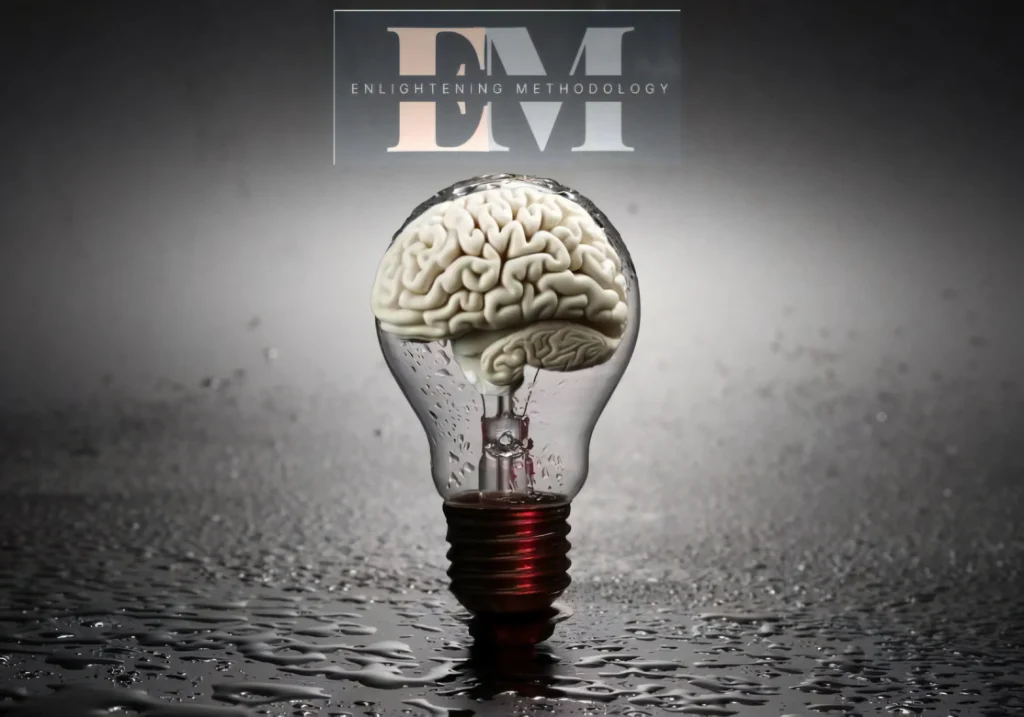Healthcare in the United States is creating huge amounts of data every day. Patient care involves interactions among patients, doctors, staff, and computer systems, creating information in many forms. Most of this data—around 80 to 90 percent—is unstructured. This means it is not stored in neat databases or tables that computers can easily read. This unstructured data includes free-text clinical notes, scanned medical records, radiology and pathology reports, patient feedback, and voice recordings. Structured data, like lab results or patient details, fits neatly into fields and columns. But unstructured data holds many more details about patients, their symptoms, feelings, and observations. However, managing and using this data well has been a challenge for healthcare workers. Natural Language Processing (NLP), a type of artificial intelligence (AI), is starting to help by turning unstructured data into usable information. This can improve patient care, make work smoother, and lower costs.
This article gives an overview of NLP in healthcare, why it matters for medical practices in the U.S., especially for practice managers, owners, and IT staff, and how it helps improve Electronic Health Record (EHR) use, clinical decisions, and administrative work.
Understanding the Role of NLP in Healthcare
Natural Language Processing uses computer programs to read and understand human language, whether spoken or written. In healthcare, this means pulling important clinical information out of lots of text like doctor notes, discharge papers, and patient histories. Since nearly 95% of healthcare data is unstructured, not using this data means missing important details that can affect diagnosis, treatment, and results.
For example, doctor notes often describe symptoms, medication changes, family history, and social health factors that don’t appear in structured fields. An NLP system reads these notes and changes complicated medical words into standard terms. It links important ideas like diseases and medicines to clinical codes (such as ICD-10 or Hierarchical Condition Categories – HCC) and organizes the data so IT systems, doctors, and staff can find and use the information quickly.
AI Answering Service Voice Recognition Captures Details Accurately
SimboDIYAS transcribes messages precisely, reducing misinformation and callbacks.
The Impact of Unstructured Data on Healthcare Quality and Operations
Unstructured data has patient stories that show a fuller picture of their health. Radiology reports, pathology results, and progress notes contain details not found in structured data. For example, using NLP to analyze radiology reports found 50% more cases of lung blood clots and blood clots after surgery than data stored in structured databases. This helps doctors find serious problems earlier.
But unstructured data also has problems:
- Volume and Diversity: Healthcare places create a lot of data. This data comes as text, audio, images, and scanned papers.
- Complex Medical Language: Medical notes use special words, short forms, abbreviations, and sometimes spelling mistakes. NLP systems must understand these correctly.
- Integration Challenges: Old EHR systems and different databases make it hard to gather and analyze unstructured data.
- Compliance and Security: Handling patient health information requires systems that follow HIPAA rules and stay secure.
Even with these challenges, ignoring unstructured data limits how much healthcare organizations can improve care and operations. NLP shows promise to solve these problems.
Enhancing Electronic Health Record Usability with NLP
EHRs are the main tool in modern healthcare, but many doctors say they are hard to use. A survey by the American Medical Association found about half of doctors were unhappy with EHRs. They said EHRs interrupt their work and create too much paperwork.
NLP can help by sorting and summarizing patient information hidden in long notes. It turns clinical data into organized formats. This lets doctors quickly find social history, medicine lists, symptoms, and past diagnoses without reading many pages of notes. This easy access to patient data helps doctors make faster decisions and reduces delays in care.
For example, Google Health’s Care Studio Conditions uses NLP to understand medical ideas from incomplete or short notes. This helps doctors better understand conditions and treatment history. It also reduces repeated tests, like extra blood tests, which saves money and makes patients more comfortable.
Predictive Analytics and Population Health Management
NLP is not only for individual patients but also for groups of people. By pulling out detailed health information and risk factors from unstructured sources, healthcare groups can sort patients better and find those at higher risk.
One example used NLP to study social media for signs of mental health risks. A 2018 study showed that changes in emoji use on Twitter could predict suicide attempts with 70% accuracy and 10% false alarms. These predictions, powered by NLP, can help start mental health help earlier.
NLP also automates measuring healthcare quality. For example, it calculates adenoma detection rates (ADR) from pathology reports. Higher ADR means fewer deaths from colon cancer. Automated data processing lets healthcare providers check this quality more often for more patients, improving care.
Automation of Medical Coding and Billing
Medical coding and billing take a lot of work and can be full of mistakes and delays. NLP automates pulling billing information from unstructured clinical documents. This technology cuts transcription errors, speeds up claims, and helps money flow better so practices stay open.
Healthcare groups using NLP for coding get faster results and less paperwork. Coders and billers then focus on harder cases and rules instead of routine data entry.
Sentiment Analysis and Patient Experience
Healthcare workers collect patient feedback from surveys, reviews, and social media. This feedback is often in unstructured form but has important clues about patient satisfaction, worries, and care quality.
NLP-driven sentiment analysis reads the mood of patient comments quickly. This helps managers find problems early—like long wait times or bad communication—with real-time notifications. Quick action helps keep patients happier and improve results.
Boost HCAHPS with AI Answering Service and Faster Callbacks
SimboDIYAS delivers prompt, accurate responses that drive higher patient satisfaction scores and repeat referrals.
AI and Workflow Automation: Streamlining Front-Office Operations
One big challenge in healthcare is managing front-office tasks. These include booking appointments, answering phones, sending reminders, and handling many calls.
AI-powered automation tools, like those from Simbo AI, use NLP to give smart front-office help that follows HIPAA rules. These systems answer patient calls, book appointments, handle cancellations, and reply to common questions without tiring staff.
This automation grows during busy times, reducing missed calls and helping patients stay connected. Front-office staff can spend time on better tasks, making work run smoother. Automated workflows also cut errors and improve records. For example, NLP-powered virtual helpers can hear patient issues during calls and add important information into the EHR.
Healthcare managers get better work capacity without hiring many new people. This helps keep practices financially healthy.
Data Interoperability and Collaboration
Data interoperability is still a major worry for U.S. healthcare providers. Connecting structured and unstructured data across systems helps build complete patient records available instantly and supports better coordinated care.
Standards like HL7’s FHIR (Fast Healthcare Interoperability Resources) help share structured data between systems. NLP works along with this by turning unstructured data into formats that fit these standards.
At conferences like HIMSS 2022, leaders stressed the need for easy data sharing to prepare for public health needs. Doctors and IT teams must work together to create systems that let data flow smoothly between platforms.
Challenges in Healthcare NLP Adoption
Using NLP in healthcare has some difficulties:
- Data Quality: Poor or inconsistent data lowers NLP accuracy (“garbage in, garbage out”).
- Semantic Complexity: Understanding unclear notes or spotting negations (like “no chest pain”) needs careful NLP setup.
- Medical Sublanguage: Healthcare uses special terms, abbreviations, and context. NLP models must be made for this environment.
- Privacy Compliance: Keeping HIPAA rules while using NLP is very important.
- Integration with Existing Workflows: Adding NLP tools without fitting them into daily work can cause problems.
For success, healthcare groups must invest in good data, train staff often, and have technical and clinical teams work together so NLP tools fit their goals.
Notable Organizations and Advances Shaping Healthcare NLP
Several healthcare and tech groups are leading in developing NLP tools:
- Google Cloud Health: Offers Healthcare Natural Language APIs and Care Studio features that help doctors get structured insights from notes.
- IBM Watson Health: Uses NLP and machine learning on big clinical data to support decision-making.
- Health Catalyst: Makes NLP tools for patient typing and quality checks like automated adenoma detection rates.
- Mount Sinai Hospital and Mayo Clinic: Use NLP for early disease detection and research by mining mostly unstructured clinical data.
- Simbo AI: Focuses on AI front-office phone automation and answering services that lower admin work and improve patient communication in U.S. healthcare practices.
The Growing Market and Future Trends of NLP in Healthcare
The NLP healthcare market in the U.S. and worldwide is expected to reach about $3.7 billion by 2025 with over 20% yearly growth. Some new trends are:
- Multilingual Support: Helping providers analyze data in different languages for wider access.
- Integration with Imaging and Wearables: Combining NLP text analysis with radiology images, pathology slides, and real-time data from wearable devices for full patient monitoring.
- Real-Time Analytics: Supporting clinical decisions with instant insights during patient visits.
- Contextual Understanding Improvements: Future NLP models will better understand unclear and hidden clinical information, making results more accurate.
Healthcare administrators and IT staff should keep up with these changes. They need to pick tools that fit their practice size, specialties, and patient needs to improve care and efficiency over time.
Natural Language Processing is a useful tool for U.S. healthcare providers handling large amounts of unstructured data. By turning this data into clear clinical and admin information, NLP helps practices offer safer, faster, and less costly care. It also improves patient satisfaction and work processes in healthcare settings.
AI Answering Service Provides Instant Language Support in 20+ Dialects
Simbo AI Answering Service lets patients choose languages, improving understanding and care.
Frequently Asked Questions
What is the significance of data interoperability in healthcare?
Data interoperability is critical for improving healthcare preparedness and response to crises. It enables seamless and secure exchange of patient data, enhancing care delivery efficiency.
How has the adoption of technology in healthcare accelerated recently?
The adoption of technology in healthcare has accelerated tenfold, driven by advancements such as rapid vaccine development and the widespread use of telehealth during the pandemic.
What role does natural language processing (NLP) play in healthcare?
NLP helps extract insights from unstructured data formats like clinical notes and lab results, significantly impacting clinical and operational workflows.
How can NLP improve patient care?
NLP allows healthcare organizations to derive valuable information from documents, improving coordination and reducing redundancies in patient care processes.
What functionalities does Google Cloud’s Healthcare Natural Language API provide?
The API enables healthcare organizations to extract and organize medical insights from unstructured text, facilitating better patient care and operational efficiency.
How does Conditions, a Care Studio feature by Google Health, assist clinicians?
Conditions uses NLP to interpret patient records, mapping medical concepts to a standardized vocabulary, which helps clinicians access relevant information quickly.
Why is extracting insights from unstructured data important?
Unstructured data, such as clinical notes, often contains critical information that can be overlooked; extracting it can enhance patient outcomes and operational efficiencies.
What are some applications of AI and machine learning in healthcare?
AI and ML are used to improve patient experiences, enhance operational processes, and support healthcare providers in delivering more efficient care.
What is the future vision for healthcare data management?
The future of healthcare data management involves greater interoperability and the use of advanced technologies to ensure timely and equitable access to patient information.
What initiatives is Google Cloud taking to enhance healthcare data access?
Google Cloud is developing technologies like the Healthcare Data Engine and Cloud Healthcare API to support the digitization and secure exchange of healthcare data.
The post Natural Language Processing in Healthcare: Transforming Unstructured Data into Actionable Insights for Better Patient Outcomes first appeared on Simbo AI – Blogs.





